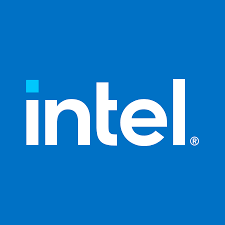What if you could predict the future? It’s the stuff of movies and novels — Like Biff Tannen of Back to The Future you could bet on the right horse and win an easy million — a superpower, that, if it were real, could bring you and your company wealth, prosperity and wild success. But what if predicting the future wasn’t just fodder for fiction?
Intel has figured out the secret to predicting the future, and it doesn’t have anything to do with time machines or crystal balls. Joe Jensen is an Intel veteran of 36 years and is currently the Vice-President of the Internet of Things and General Manager of Retail, Banking, and Education at Intel, and on this episode of the Business X-factors, he brings us into the company to reveal how innovation happens and what it actually looks like to develop and implement technology for the future.
Main Takeaways:
- Positive Paranoia: If you keep in the back of your mind that you are always on the brink of being taken down by competitors, you can develop a sense of positive paranoia, which allows you to recognize strategic inflections points and drive innovation in a way that will keep you ahead of the game.
- An Eye Overseas: So much innovation is happening all over the world, and often other companies are ahead in certain areas. Those who want to create innovative new solutions should broaden their horizons and look to other areas to find ways that other cultures are not just using technology, but how their expectations around technology will change because those expectations will likely soon become widespread in other areas.
- Hello, Old Friend: Sometimes the future can be found in the past. Older technology can often be used in new ways that weren’t right at the time but could be game-changers now.
Key Quotes:
“We understand what technology will be capable of in the next five to 10 years, better than anybody in the world.”
“We really as a company have internalized the rate of pace of technology. And I think at Intel, because our planning horizon for silicon features is five years, we’ve got a much longer thinking about where things are headed. If anything, I think at Intel we see things happening more quickly than they really do.”
“Even though it was in a way too early to show any real-world application in the early 2000s, Intel was still right on the money about the streaming revolution. In 2020, 232 million people watched streaming or downloaded video across all devices in the U.S. alone. And since the days of trying to put large and loud computers in folk’s living rooms, Intel now helps you stream things like an 8k augmented reality experience from the cloud in real-time.”
“Amazon is the boogeyman. Everybody’s, ‘Hey, Amazon’s killing brick and mortar,’ and we’ve been saying for several years to retailers, Amazon’s not your problem. Consumer expectations are your problem. Amazon’s been way more nimble at meeting these changing expectations. Online sellers have tools and analytics and technologies that allow them to more nimbly meet these expectations.”
“I think for us, it’s focusing again on whose problem you’re trying to solve, who are we trying to help? And I think we’re particularly good at Intel when we can clearly define a problem that has value, we have 3,800 PhDs – you know we can solve any problem if we really understand what problem we’re trying to solve.”
“China is so far ahead of us. Most consumers in big cities in China, five years ago, were having most things delivered to their house, grocery shopping. I don’t know anybody that does grocery shopping in China. They also have prepared food delivered…they’ll have seafood or shellfish or something, having it prepared and delivered is like a dollar more than the fish. It’s not like same-day delivery. It’s not a one-hour delivery. The new standard is 20- minutes.”
“For more than 10 years, we’ve had the technology at a cost-effective level to anonymously estimate, age and gender…And so, what you would do is say, hey, based on who’s walking in the store, let’s show something that they’re likely interested in. Let me generate some demand for the person walking in the door and not just a generic ad because that’s the time of the season or the season we’re in. I can take it a step further. Now you can actually reuse some analytics and you can know that people that look like this person anonymously, tend to buy this kind of thing.”
Bio:
Joe D. Jensen is Vice President in the Internet of Things (IoT) Group and general manager of the Retail, Banking, Hospitality and Education Group at Intel Corporation. Jensen has over 10 years of experience leading the team responsible for helping third-party brands and retailers use Intel’s technology to better serve consumers. Before assuming his current role, Jensen managed Intel’s low-power embedded processor division, where he led the development of purpose-built system-on-chip (SoC) devices for the embedded market segment. From 2003 to 2005, he managed Intel’s Digital Home Division, leading the team that developed a SoC product for digital set-top boxes. Earlier in his Intel career, he spent five years overseeing the company’s embedded Intel® architecture division, which supported a full range of embedded market segments with Intel products. A 35+ year veteran at Intel, Jensen joined the company in 1984 as a product engineer and rose through the ranks to lead many organizations in the embedded and digital home markets. In addition to leading Intel’s Retail organization, Jensen is well known across the retail industry, and is currently on the board of directors for the Retail Industry Leaders Association, advocating priorities and standards across the retail industry. Jensen earned his bachelor’s degree in electrical engineering from South Dakota State University and his MBA degree from Arizona State University. He holds a patent in the area of digital audio and has an additional patent pending in the field of sensing for digital signage.
—
Business X factors is produced by Mission.org and brought to you by Hyland.
For over a decade, Hyland has been named a Leader in the Gartner Magic Quadrant for Content Services Platforms, leading the way to help people get the information they need when and where they need it. More than half of 2019 Fortune 100 companies rely on Hyland to help them create more meaningful connections with the people they serve. When your focus is on the people you serve, Hyland stands behind you. Hyland is your X factor for better performance. Go to Hyland.com/insights to learn more.




